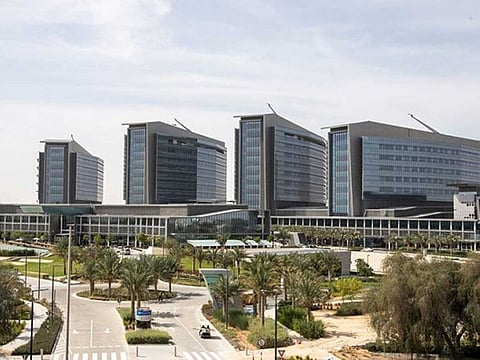Medical technology used in Abu Dhabi for the first time saves 85-year-old’s knee
Accelerometer navigation system aids surgery team at Sheikh Shakhbout Medical City

Also In This Package
Abu Dhabi: The orthopaedic surgery team at Sheikh Shakhbout Medical City (SSMC) in Abu Dhabi has successfully completed knee replacement surgery on an 85-year-old female patient with a complex case, using minimally invasive computer-guided technology. The technology was used for the first time in Abu Dhabi.
The surgery was conducted using a hand-held computer navigation system. This accelerometer navigation system aids in hip and knee replacement surgeries, making them more streamlined and time efficient.
Complex case

Another challenge
A secondary challenge was that the patient is of an advanced age with pre-existing comorbidities, including ischemic heart disease, lung disease, and renal failure. To ensure maximum benefit from the knee replacement, the patient’s knee was initially injected for temporary pain relief for a few weeks, which also helped restore a certain degree of mobility. Once the pain improved, the patient’s walking improved, which was a key indication that performing the knee replacement surgery would be effective in improving her overall mobility.
Another element the surgeons needed to consider was the existing presence of metalwork in the patient. The usual process of a knee replacement surgery requires the placement of metalwork to be used as a guide inside the canal of the bone. In this patient’s case, this couldn’t be done due to the existing metalwork. Removing the first set of metalwork would have presented a significant risk of the bone breaking where the metal was situated, as the patient is osteoporotic and this would have also required that the patient undergo a second surgery, which, given her age and pre-existing conditions, was not recommended.
‘Best option’
“The best option for her was to do the knee replacement while keeping the existing metal. This was the catalyst for us exploring the hand-held accelerometer device, as it doesn’t require penetration of the bone, which is much safer for patients, especially those who are older. It also gives accurate bone cuts and bone alignment, which is research-proven,” Dr Ya’ish said.
Quick surgery
“Applying the device typically takes about four minutes, and we applied it on the knee itself, moving it as the technology learnt the orientation of the bone to give us the alignment where the bone needed to be cut, without breaching or penetrating the bone itself. From cutting to dressing, the surgery took one hour and ten minutes, and was a success. The patient was able to stand the very next day and was walking by the following day.”
Back on her feet
The patient was in the care of a multidisciplinary team at SSMC and is now walking independently with the support of a walking aid.
The hand-held accelerometer technology is available at SSMC and will continue to be utilized for complex cases in similar patients.
SSMC is one of the UAE’s largest hospitals for serious and complex care and a joint-venture partnership between Mayo Clinic and Abu Dhabi Health Services Company (SEHA).
Sign up for the Daily Briefing
Get the latest news and updates straight to your inbox









